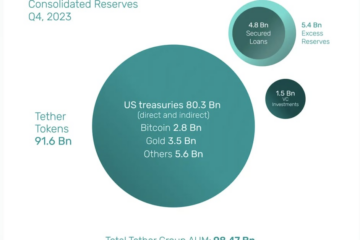
The following article is an op-ed by Debra Nita, Associate Director, Head of Growth
The next crypto breakthrough won’t come from a whitepaper or promises to “revolutionize finance.” It will emerge from something simpler, more human. Like NFTs, gaming and decentralized finance (DeFi) took off in retail popularity in 2021-22, the current bull market is waiting for new killer apps to emerge.
Despite being seen as frivolous, memecoins are a prime example of a killer crypto app, and they reveal a blueprint ignored by “serious” crypto initiatives. This was evident in recently popular tokens like $TRUMP and $MELANIA. A survey found that 14% of Americans – one in seven – invested in $TRUMP. This isn’t just speculation – it’s mass onboarding.
The killer use cases that drive retail adoption aren’t about solving the most complex problems. Instead, they tap into universal human emotions and habits. These should be guiding principles for projects that aim to become the next killer crypto app.
Forget Utility, Think Social Phenomenon
The most popular crypto use cases always transcended their technical origins to become cultural phenomena. Bitcoin started as a peer-to-peer electronic cash system but later grew in the public’s imagination as a symbol of financial sovereignty and rebellion against traditional systems.
The $TRUMP and $MELANIA crypto tokens show how Donald and Melania Trump become cultural icons beyond politics. Chainalysis revealed that 50% of $TRUMP and/ or $MELANIA token holders had never bought a Solana altcoin before, and 83% of users held less than $1,000 in Solana assets. These tokens essentially attracted a large group of retail users into the world of crypto for the first time, on the back of Trump and Melania’s popularity.
The industry has promising killer apps on its horizon. The TON and Telegram combo show signs of promise due to their social relatability. Leveraging their mobile-first, social ecosystem to transform mini-apps (particularly GameFi ones), they have garnered some success in blending Web2 usability with Web3 utility. While the current TON gaming apps may be critiqued for simplicity, Telegram’s distribution (950M+ users) offers a viral launchpad if developers prioritize emotional engagement alongside token rewards.
If TON and Telegram can tap into the emotional architecture that makes gold-standard games like Grand Theft Auto a social phenomenon, they could easily become crypto’s next killer use case.
Likewise, founders building retail apps should ask themselves “Can what we’re building galvanize a large group of users to rally behind it?” and “What about our project could make it a household name, and excite every user to share it with their friends?”
So Easy Grandma Would Understand
A killer use case is intuitive and easy to use. Buying $TRUMP doesn’t require understanding smart contracts, liquidity pools, or consensus mechanisms. It’s as simple as downloading a wallet, swapping some SOL, and joining in the fun. This low barrier to entry is crucial for retail adoption.
During the 2024 U.S. presidential race, Polymarket – a prediction market where people bet on real-world events, like guessing who will win an election – exploded in popularity. Nearly 1 million new users could easily join as the steps to participate were straightforward – download the app, sign up with Google, deposit USDC through an exchange, and bet on a question (e.g., “Will Candidate X win?”).
This simplicity reflects a growing trend in crypto: starting with the end-user experience rather than letting infrastructure dictate the experience.
We’re seeing this shift toward simplicity through projects like Base and Hyperliquid. Messari’s Annual Crypto Theses 2025 report showed that Base (built by Coinbase) simplified moving funds from exchanges to blockchains with one-click functionality, onboarding millions. Similarly, Hyperliquid’s perpetual decentralized exchange (DEX) saw massive traction by simulating the trading experience of leading centralized exchanges (CEX) like Binance – user-friendly and cost-efficient while ensuring asset ownership.
While CEXes were a crucial onboarding vehicle in the last bull run due to the ease of converting fiat into crypto, DEXes could see an explosion in popularity this cycle. With seamless on-ramping improving in 2025, decentralization through onchain trading could become even more mainstream due to its increasing ease of use.
The Bigger, the Better
Network effects drive exponential value in platforms where utility increases with each new participant. Bitcoin’s strength as a store of value and medium of exchange grows with each new adopter.
The memecoin sector’s explosive growth from $20 billion to $120 billion in 2024 validates this thesis. As more users join ($TRUMP had 11 billion at its highest, becoming the 14th-largest by market capitalization within the crypto sector), the network becomes more valuable, attracting more participants – creating a powerful feedback loop of growth and cultural relevance.
Looking ahead, stablecoins are changing the payments industry by offering cheaper, faster, and more accessible solutions to traditional centralized payment systems. In 2024 alone, over 28.5 million users completed 600 million stablecoin transactions, showing their global adoption.
A key driver of this adoption could be US interest in maintaining Dollar dominance through USD-denominated stablecoins. A recent executive order by the Trump administration prohibits the development of a central bank digital currency (CBDC) in the U.S., positioning Dollar-backed stablecoins as the primary digital representation of the U.S. dollar.
Stablecoins could be the next killer crypto app due to their network efforts. The more they are used for payments, the more they will be used. Stablecoins could become the primary choice for the digital Dollar, transforming the financial landscape while anchoring US economic influence.
The Blueprint for Retail Adoption
Challenges remain including regulatory uncertainty and lack of implementation of policies, technological complexities in scaling, and an existing gap in the social legitimacy of crypto.
Despite these challenges, projects should focus on the human element – designing experiences that make users feel like a part of a cultural phenomenon, have simplicity at their core, and emphasize the creation of network effects. Retail projects that succeed in this bull run will be the ones that understand and implement this blueprint.
The post The killer use case everyone loves to hate is a blueprint for retail adoption appeared first on CryptoSlate.
 Bitcoin
Bitcoin  Ethereum
Ethereum  Tether
Tether  XRP
XRP  USDC
USDC  Wrapped SOL
Wrapped SOL  TRON
TRON  Lido Staked Ether
Lido Staked Ether  Dogecoin
Dogecoin  Figure Heloc
Figure Heloc  Cardano
Cardano  WhiteBIT Coin
WhiteBIT Coin  Wrapped stETH
Wrapped stETH  Bitcoin Cash
Bitcoin Cash  Wrapped Bitcoin
Wrapped Bitcoin  USDS
USDS  Binance Bridged USDT (BNB Smart Chain)
Binance Bridged USDT (BNB Smart Chain)  Chainlink
Chainlink  Wrapped eETH
Wrapped eETH  Monero
Monero  WETH
WETH  Stellar
Stellar  LEO Token
LEO Token  Hyperliquid
Hyperliquid  Zcash
Zcash  Ethena USDe
Ethena USDe  Coinbase Wrapped BTC
Coinbase Wrapped BTC  Litecoin
Litecoin  Sui
Sui  Avalanche
Avalanche  sUSDS
sUSDS  Hedera
Hedera  Shiba Inu
Shiba Inu  Dai
Dai  USDT0
USDT0  PayPal USD
PayPal USD  Mantle
Mantle  Toncoin
Toncoin  World Liberty Financial
World Liberty Financial  Cronos
Cronos  Ethena Staked USDe
Ethena Staked USDe  Uniswap
Uniswap  Polkadot
Polkadot  MemeCore
MemeCore  Canton
Canton  USD1
USD1  Aave
Aave  Rain
Rain 


